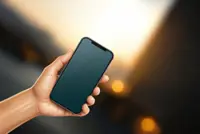Steve Jobs unveiled the iPad and created a new category of device that stuck around. — AFP
Have you ever wondered about the remarkable evolution of technology over the years, particularly in Malaysia?
Let’s journey back to the year 2000, a time when people heaved a sigh of relief that the Y2K bug, which was predicted to disrupt computer systems all over the world, fizzled out.
Already a subscriber? Log in
Save 30% OFF The Star Digital Access
Cancel anytime. Ad-free. Unlimited access with perks.





